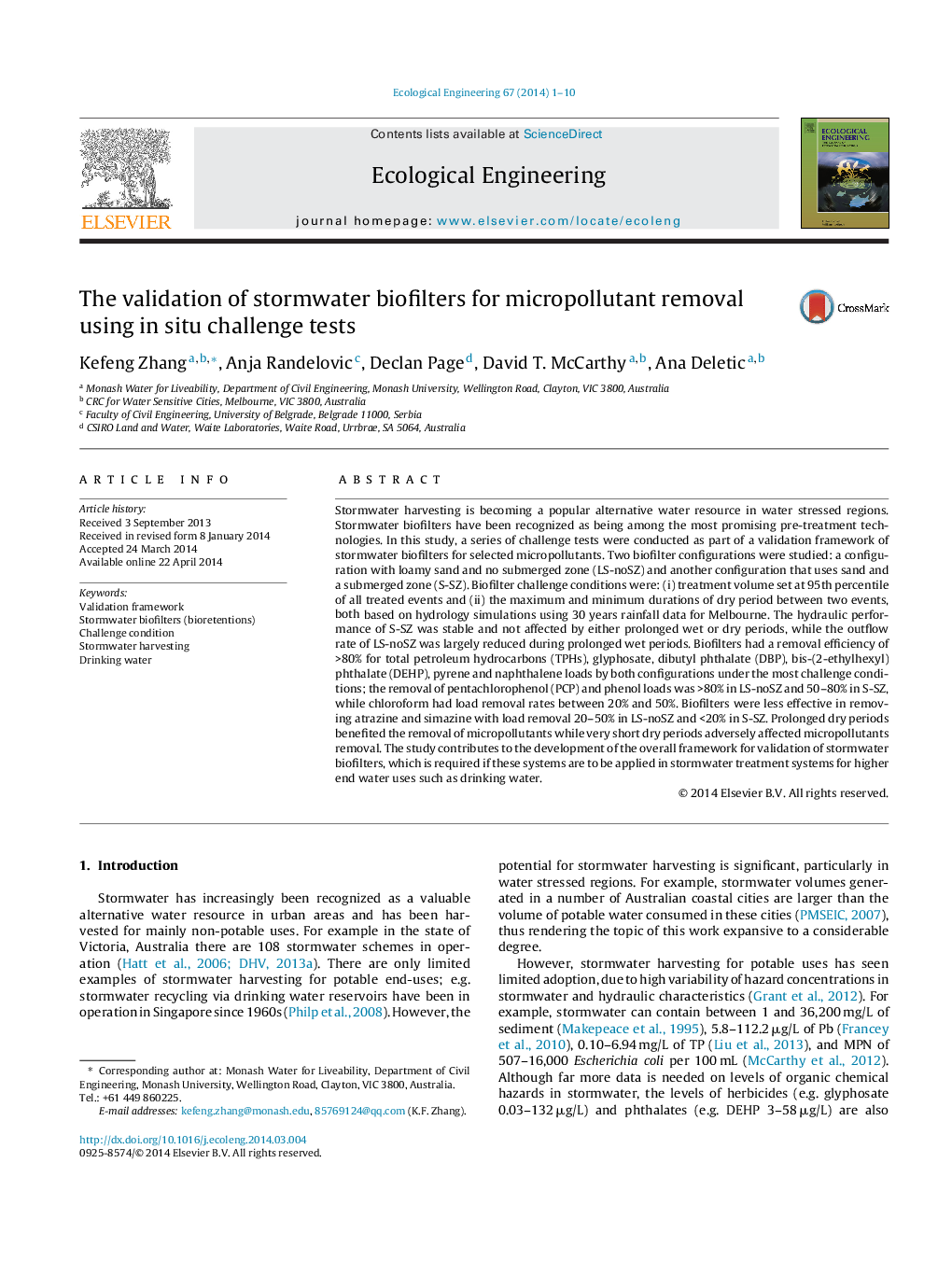| کد مقاله | کد نشریه | سال انتشار | مقاله انگلیسی | نسخه تمام متن |
|---|---|---|---|---|
| 4389408 | 1618032 | 2014 | 10 صفحه PDF | دانلود رایگان |
• This study attempts for the first time to validate biofilters for stormwater harvesting.
• TPHs, glyphosate, DBP, DEHP, pyrene and naphthalene were well removed (>80%).
• Atrazine and simazine were poorly removed under challenge conditions (<50%).
• Extreme wet condition negatively impacted the removal of micropollutants.
Stormwater harvesting is becoming a popular alternative water resource in water stressed regions. Stormwater biofilters have been recognized as being among the most promising pre-treatment technologies. In this study, a series of challenge tests were conducted as part of a validation framework of stormwater biofilters for selected micropollutants. Two biofilter configurations were studied: a configuration with loamy sand and no submerged zone (LS-noSZ) and another configuration that uses sand and a submerged zone (S-SZ). Biofilter challenge conditions were: (i) treatment volume set at 95th percentile of all treated events and (ii) the maximum and minimum durations of dry period between two events, both based on hydrology simulations using 30 years rainfall data for Melbourne. The hydraulic performance of S-SZ was stable and not affected by either prolonged wet or dry periods, while the outflow rate of LS-noSZ was largely reduced during prolonged wet periods. Biofilters had a removal efficiency of >80% for total petroleum hydrocarbons (TPHs), glyphosate, dibutyl phthalate (DBP), bis-(2-ethylhexyl) phthalate (DEHP), pyrene and naphthalene loads by both configurations under the most challenge conditions; the removal of pentachlorophenol (PCP) and phenol loads was >80% in LS-noSZ and 50–80% in S-SZ, while chloroform had load removal rates between 20% and 50%. Biofilters were less effective in removing atrazine and simazine with load removal 20–50% in LS-noSZ and <20% in S-SZ. Prolonged dry periods benefited the removal of micropollutants while very short dry periods adversely affected micropollutants removal. The study contributes to the development of the overall framework for validation of stormwater biofilters, which is required if these systems are to be applied in stormwater treatment systems for higher end water uses such as drinking water.
Journal: Ecological Engineering - Volume 67, June 2014, Pages 1–10
